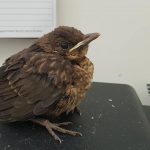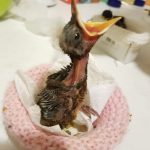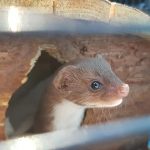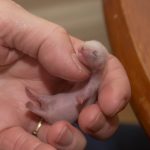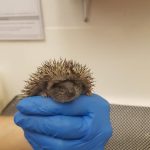 |
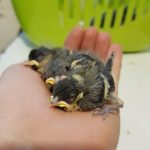 |
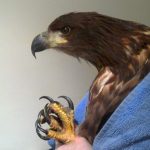 |
First Response
|
||
We have produced the following guidelines from our own extensive experiences in the field and from close working relationships with a wide range of veterinary surgeries throughout the region.
The first important stages on presentation of a wildlife casualty is to look at the 5 W’s –
- What
- Where
- Why
- Who
- When
Firstly, identify the species in question. The finder may have already given this information on the Casualty Transfer Form detailing all of the above information, but these details should be checked first to ensure the right direction is taken for treatment to take place. A simple google search can confirm any suspicions of the species in order to continue. You can also use our Self-Help Tool for identification of common patients we deal with on a regular basis.
Important Considerations
- Do NOT try to release a new wildlife casualty immediately after being presented – if an untrained member of the public has managed to catch a wild animal, no matter how well it may be presenting itself, there will still likely be something seriously wrong requiring further investigation.
The decisions we all make when an animal is first presented are very important in determining the correct course of action for a patient. This is also closely reliant on the gathering of important information at reception when the animal is passed over. Sometimes the circumstances surrounding the animal’s behaviour, the time of day, the location etc can be most important – this is especially true in the Summer months where, in communication with a wildlife centre, the correct course of action may be to return to animal back to where it was found with the utmost urgency with no treatment required.
As part of the decision making process, we must also bear in mind the eventual end goal for each and every wildlife casualty brought in for care – release back into the wild. If this aim cannot be achieved in a reasonable time frame, with or without further care at a wildlife centre, the only option for most species in the best interests of the animal is euthanasia.
As with all other queries, please do get in touch if you feel unsure about which route to take regarding a patient’s prognosis – we utilise all means of modern day technology and a ready and willing to exchange our opinions by phone, email or WhatsApp.
The first consideration for any new baby animals presented at reception should be to determine if the animal truly needs any help in the first place.
Every Spring and Summer, we are all presented by a whole range of baby animals by well-meaning members of the public, many of which need not have been rescued and could’ve been left where found. Knowing which advice to give in each case can be very difficult with so many different species and scenarios to cover.
As a simple guide to cover “most” instances, please consider the following points to help you make a decision. This will help reduce the number of baby animals brought into your surgery and needless time and expense to the wildlife charity too.
For Baby Birds:
This example shows two juvenile Blackbirds to show the bird’s distinct differences at each stage of development, each requiring different advice and/or treatment to be given depending on the circumstances
For Baby Mammals:
This example shows the same baby Stoat at two different stages of development.
We cannot provide a definitive list, but the following scenarios generally do not require an animal to be rescued;
-
-
- Uninjured Fledgling Birds – Fledgling birds are of an age where they have left the nest and have developed some but not all their feathers – they can STAND and run around, but CANNOT yet take flight – this is a NATURAL process afforded to ALL wild birds you will see in your garden – taking a bird under these circumstances is totally unnecessary and will only delay the bird’s natural development in captivity while also adding pressure to hand rearing resources of the charity. If you’re unsure, you can send us Photos or Videos to aid identification via Facebook or Whatsapp – see our Contact Us page for more info.
-
- Hedgehogs found after dark – In most cases, Hedgehogs found out after dark do not require rescue. These nocturnal animals are active only after dark and are behaving normally. We DO NOT support removing any animals from their natural environment to suit human preference. Hedgehogs like most wild animals will carry some number of external parasites – only large burdens require treatment and Hedgehogs should not be removed from the wild solely for the purpose of removing a single Tick, for example. Please contact us before taking action.
-
- Leverets found alone – Leverets are Baby Hares – they spend most of their time left alone in shallow dips above ground away from siblings and their Mother – typically, they are only fed twice a day and become more active after dark. If you come across a Leveret in such an environment, please do not touch the youngster and leave well alone. If you are unsure if this is the right thing to do in your situation, please contact us for advice.
-

